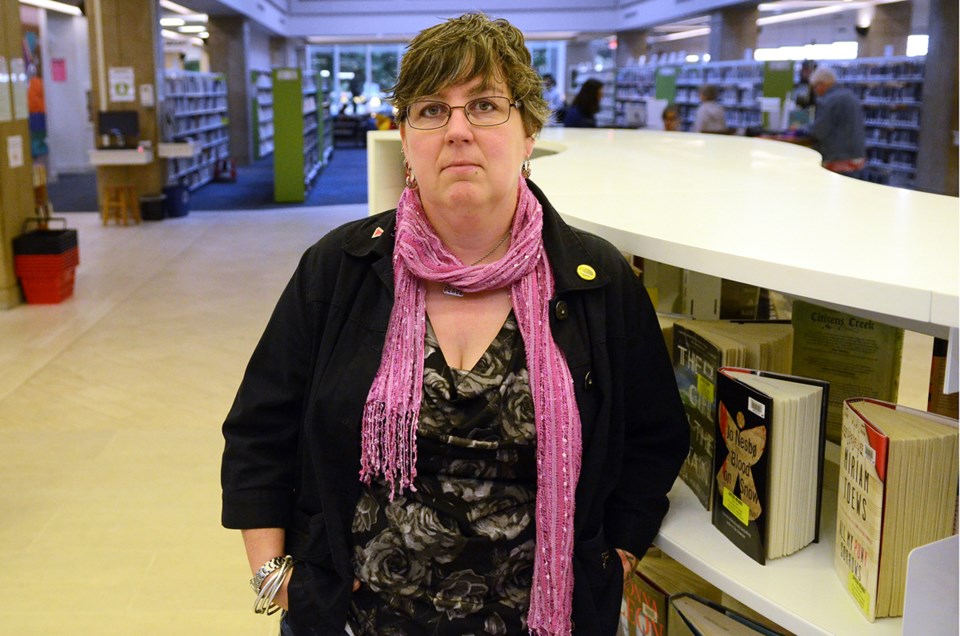If you think the worst occupational hazard B.C.’s library workers face is paper cuts, their union has news for you.
Exposure to urine, feces, vomit, bed bugs and used needles, routine encounters with mentally-ill patrons, threats, theft and clients using the library to watch porn, deal drugs and ply the sex trade, are among their lesser known health and safety hazards, according to a recent CUPE B.C. survey.
“Libraries are one of the most accessible indoor public spaces that exist in communities, campuses and schools,” states a draft version of the survey report provided to the NOW last week. “In addition to being information and technology hubs, libraries are also centres for community building and social interaction. As a result, at times, libraries can be unpredictable workplaces.”
The online survey, completed by 500 of CUPE’s 4,500 library workers around the province in May and June, found 65 per cent had encountered biohazards like feces, urine, used needles, and bed bugs, and only 37 per cent said they had adequate training to deal with biohazards.
Sarah Bjorknas, a supervisor at Burnaby’s Bob Prittie Metrotown Library, wasn’t surprised by the findings of filth.
“I haven’t personally encountered all of those things, but it’s a public space,” she told the NOW.
“For example, children’s librarians doing story time or just having kids in their space. Kids are kids; they don’t think about ‘Oh, that’s maybe not appropriate to do here’ or ‘I need to go somewhere else to do that.’”
Workers who check in and reshelve books also handle library materials that people have taken into their own homes.
“We don’t know what they do with it in their homes,” said Bjorknas, who has worked in the Burnaby system for 20 years, “and then they bring it back. It comes back in a bag; sometimes we find interesting things in the bag with the item.”
Incontinent patrons and those with just less than stellar personal hygiene are another problem, according CUPE B.C. library coordinator Zoe Magnus, a former library technician with 25 years’ experience in public, post-secondary and school libraries.
Magnus doesn’t want people to think libraries are covered in floor-to-ceiling filth, but library workers are bearing the brunt of staffing reductions in their own organizations and cuts to social services in the community at large, she said.
“The survey results bore out what we’ve been hearing anecdotally for a number of years,” she said.
Along with exposure to poop and used needles, library workers are shouldering a greater surveillance role to keep libraries safe and working with more and more people who need social support, according the CUPE report.
“These duties put additional strain on the workload of library workers and can pose an additional health and safety threat if the proper training is not provided,” states the report.
Over the last 10 years or so, Bjorknas said local libraries have seen a rise in apparently mentally-ill and homeless patrons coming to the library because they have no place else to go.
“It came to a point where we needed to shift how we were thinking and doing things,” she said.
One example was implementing a no-sleeping rule to discourage library users who had started spreading themselves and their belongings out in the library.
“We absolutely want to continue to be a welcoming space for everyone and a safe space for everyone, and that means different things for different people,” Bjorknas said.
She said more training is needed for workers on how to deal with marginalized people, especially those who might become aggressive.
“There are courses available,” she said. “It’s always been around, but it’s a struggle because library budgets are not as generous as some other areas of the city, so training is a challenge, but people are encouraged to try to get themselves – if it’s anyone who works on a public desk – to sharpen their skills on dealing with people and how to manage conflict.”
Magnus, however, said training can only go so far, and increased staffing is needed to address the issues raised in the survey.
Recommendations from the survey included improved health and safety education and training for workers, greater use of joint occupational health and safety committees and hiring of specialized staff, like psychiatric social workers, in libraries heavily used by marginalized people.
The final report will be released in December.



